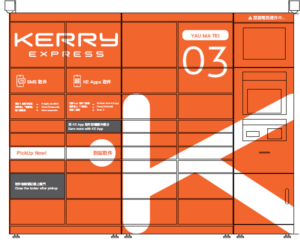Reverse logistics plays a critical role in an online shop’s distribution channel strategy. On average, 20% of products are returned in eCommerce purchases and on promotional periods, such as Black Friday or Christmas, which can have up to 50% returns, according to the KPMG data. In particular, the product category that suffers the most returns is fashion, where 1 out of 3 garments purchased in online channels are returned, followed by accessories and technology.
Furthermore, a clear and simple returns policy may be the determining factor for clients’ purchase decisions. 64% of online buyers review return policies before purchasing items, and the most valued aspects of a return policy include:
 • Free shipping of returns
• Free shipping of returns
• A simple returns policy: “no reason given”
• Automatic reimbursement to the debit or credit account as soon as the distributor receives their articles
Therefore, return logistics poses increasingly hefty costs that are even higher than those in cross-border logistics, affecting the profit and loss of eCommerce operations. These costs may involve collecting and transporting returns to the warehouse, returns that remain stuck in the warehouse, reselling stocks, or even disposing of items.
To reduce these costs, companies invest in digitized inventories and use technologies, like Big Data or advanced analytics, that efficiently save costs by automating processes. These technologies help create customer profiles, allowing companies to study consumers that exploit return privileges. This way, companies can take penalty measures against such customers, thereby reducing costs.
For optimal returns management, online shops also opt for agile relocation processes from the entries of goods, allowing cross-docking to avoid repositioning them. Alternatively, they choose guided group relocation, where direct tours are developed into picking.
However, it is ultimately necessary to choose the most appropriate logistics partner that can effectively manage reverse logistics—that is, agile management of returns with alternatives to home delivery—to reduce the return costs arising from a customer’s absence at the time of delivery. According to Ecommerce studies, 15%-25% of packages are returned due to failure in delivering them in the first attempts.

Therefore, enabling networks of collection points (PUDO) and delivery at local post offices would help reduce reverse logistics costs.
Furthermore, alternative delivery points are a highly valued delivery method. It provides convenience for buyers who cannot always be at home at a given schedule, and it does not need a third party’s help (e.g., a neighbor, family, doorkeeper). Noteworthily, it also allows customers to choose where and when to pick up their purchases.
In a nutshell, the most important step online shops should do to have efficient reverse logistics is to secure a strong logistics partner. A logistics partner equipped with last-mile omnichannel delivery solutions, allowing them to deliver orders at home, in Mailbox, in Locker, in local post offices, and at points of convenience. It is also necessary that such delivery solutions can provide drop-off offices for returns, guaranteeing a clear and fast refund process.
All these will result in increased client trust and satisfaction, giving them a better shopping experience, where an increase in a company’s profitability will only be a matter of time.
To know more about our personalized logistics solutions, please contact our team at Project.kparcel.Marketing@k-parcel.com
